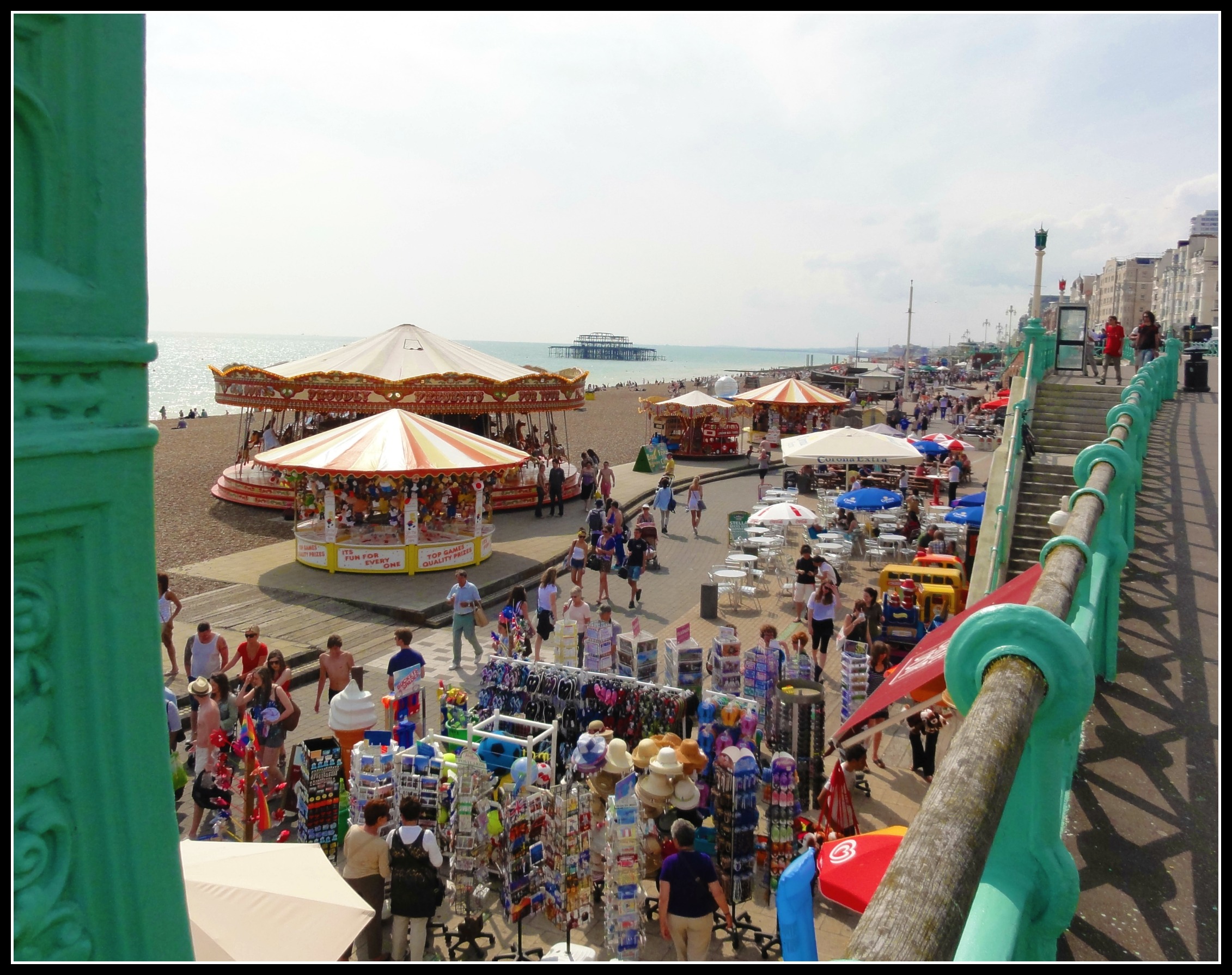It’s kind of overwhelming to visit Brighton. The combination of royal excess and beachy tourist excess live in what appears to be comfortable collusion. Which draws more people? Georgy and his morgianic wife’s homage to crass cultural allusion or the pier’s obvious allure to those less historically oriented? I don’t know the answer to that, but I loved them both.
We couldn’t take photos inside the palace, but please, take the time to go to the Royal Pavilion’s website. George, son of George III, spent a fortune turning a simple summer-house into a palace of almost unbelievable excess. Gold leaf everywhere. Oriental and Moorish decorative arts commissioned by a man who had never visited the Far East. Truly a king’s ransom spent on a pleasure palace.
The story of George and George is an amazing piece of history that people in the United States don’t seem to really know about. We only see George III as the villain in the Declaration of Independence. The short version (in my lens) is that George III was busy dealing with revolutions across his realm, including the American colonies in 1776. Unfortunately, historians now believe that he suffered from a liver disorder that affected his nervous system, resulting in, among other symptoms, mental disturbances. By 1810, his deteriorated and inconsistent mental condition was such that his son, the former playboy who had already married a commoner in an illegal ceremony, became Regent for his father. This is the “Regency” period in which Jane Austen wrote her books. My Austen fans will remember Brighton as an important setting for Jane and her characters.
Since that time, Brighton and its beach have emerged as the Atlantic City of England, complete with a boardwalk, merry-go-round, and seafood restaurants. It’s an old school beach resort that transcends the test of time; people still spend their vacations on the English Channel, basking in the summer sun.
One of the things I love about England is that, unlike their American counterparts, people seem totally comfortable living with the human blemishes on their rulers’ legacies. You won’t find books about Marilyn Monroe in the White House (or even Monica Lewinsky, who, in my opinion, desecrated the White House Dish Room with her darn thong), and the royal palaces don’t seem to have any problem with having all of their dirty laundry for sale in the gift shops accompanying them.
Despite his relationship and children with Maria Fitzherbert, in 1795 George was forced to marry a royal cousin, Caroline of Brunswick, in order to bring in new revenue with her dowry to pay his debts. The Prince of Wales claimed to only have consummated their marriage twice on the wedding night and once the night after. Apparently Caroline met her end of the bargain at that point, because she immediately became pregnant. Unfortunately, after the birth of their only child Charlotte in 1796, the pair separated and never again lived together as husband and wife. He continued his quasi-marital relationship with Maria Fitzherbert as well as other mistresses.
When Georgy finally became king in 1820, his reign was clouded with controversy. Both he and Caroline were having affairs. Caroline had not lived in England since 1814, but she chose to return for her husband’s coronation, and to publicly assert her rights as Queen Consort. However, George IV refused to recognise Caroline as Queen, and commanded British ambassadors to ensure that monarchs in foreign courts did the same. She was actually barred from entering the coronation at Westminster Abbey on July 19, 1821, even though she tried. The King sought a divorce, but his advisers suggested that any divorce proceedings might involve the publication of details relating to the King’s own adulterous relationships. Caroline fell ill on the coronation day and died on August 7; during her final illness she often stated that she thought she had been poisoned. Historians now say that she may have had cancer.
Despite the sordid history of their relationship, excerpts from Caroline’s diary where she openly discussed her relationship with George and her affairs with other men are still sold in the gift shop at the Royal Pavilion in Brighton. I wish I would have bought a copy!
Looking back on our day in Brighton, I can only revel in its awkwardness. Everything about Brighton as tourists see it is over the top, and that’s okay. Its beauty and allure lie in its lack of conventionality; it’s a city of many facets. We loved it.







